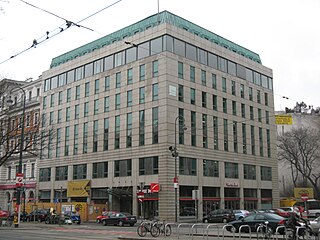The Japanese Red Army was a militant communist organization active from 1971 to 2001. It was designated a terrorist organization by Japan and the United States. The JRA was founded by Fusako Shigenobu and Tsuyoshi Okudaira in February 1971, and was most active in the 1970s and 1980s, operating mostly out of Lebanon with PFLP collaboration and funding from Muammar Gaddafi's Libya, as well as Syria and North Korea.
The Lod Airport massacre was a terrorist attack that occurred on 30 May 1972. Three members of the Japanese Red Army recruited by the Popular Front for the Liberation of Palestine – External Operations (PFLP-EO), attacked Lod Airport near Tel Aviv, killing 26 people and injuring 80 others. Two of the attackers were killed, while a third, Kōzō Okamoto, was captured after being wounded.

The Iranian Embassy siege took place from 30 April to 5 May 1980, after a group of six armed men stormed the Iranian embassy on Prince's Gate in South Kensington, London.

Kōzō Okamoto is a Japanese communist and member of the Japanese Red Army (JRA), responsible for the massacre of 26 passengers at Ben-Gurion International Airport in Israel.

Japan Air Lines Flight 472 was an aircraft hijacking carried out by the Japanese Red Army (JRA) on 28 September 1977.

The Japanese embassy hostage crisis began on 17 December 1996 in Lima, Peru, when 14 terrorist members of the Túpac Amaru Revolutionary Movement (MRTA) took hostage hundreds of high-level diplomats, government and military officials and business executives. They were attending a party at the official residence of the Japanese ambassador to Peru, Morihisa Aoki, in celebration of Emperor Akihito's 63rd birthday. Although the crisis took place at the ambassadorial residence in San Isidro rather than at the embassy proper, it is often referred to as the "Japanese embassy" hostage crisis.

Operation Chavín de Huántar was a military operation in which a team of 142 commandos of the Peruvian Armed Forces ended the 1997 Japanese embassy hostage crisis by raiding the Japanese ambassador's residence and freeing the hostages held there by the terrorist organization Túpac Amaru Revolutionary Movement (MRTA). It is considered one of the most successful hostage rescues in history.

Haruo Wakō was a Japanese communist militant, member of the Japanese Red Army (JRA).

The West German Embassy siege in Stockholm, Sweden, was a hostage standoff initiated by the Red Army Faction (RAF) on 24 April 1975. Collectively, the attackers referred to themselves as Kommando Holger Meins, after Holger Meins, an RAF member who had died of starvation during a (collective) hunger strike in Wittlich Prison on 9 November 1974.
The AIA Building hostage crisis took place at the AIA Building in Jalan Ampang, Kuala Lumpur, Malaysia on 5 August 1975. The Japanese Red Army took more than 50 hostages at the AIA building, which housed several embassies. The hostages included the United States consul and the Swedish chargé d'affaires. The gunmen won the release of five imprisoned terrorists and flew with them to Libya.
On 6 February 1974, Palestinian militants occupied the Japanese embassy in Kuwait City, taking the ambassador and ten others hostage. The militants' motive was to support the Japanese Red Army members and Palestinian militants who were holding hostages on a Singaporean ferry in what is known as the Laju incident. Ultimately, the hostages were released, and the guerrillas were allowed to fly to Aden.
Fusako Shigenobu is a Japanese communist activist, writer, and the founder and leader of the now-disbanded militant group Japanese Red Army (JRA).

Ilich Ramírez Sánchez, also known as Carlos the Jackal or simply Carlos, is a Venezuelan who conducted a series of assassinations and terrorist bombings from 1973 to 1985. A committed Marxist–Leninist, Ramírez Sánchez was one of the most notorious political terrorists of his era, protected and supported by the Stasi and the KGB. After several bungled bombings, Ramírez Sánchez led the 1975 raid on the Organization of the Petroleum Exporting Countries (OPEC) headquarters in Vienna, during which three people were killed. He and five others demanded a plane and flew with a number of hostages to Libya.

Carlos, also known as Carlos the Jackal, is a 2010 French-German biographical film and television miniseries about the life of Venezuelan terrorist Ilich Ramírez Sánchez, nicknamed Carlos the Jackal, covering his first series of attacks in 1973 until his arrest in 1994. It premiered as a three-part TV mini-series on French pay channel Canal+, with the three parts airing on May 19, May 26, and June 2, 2010. On the same day it premiered on Canal+, the full 5½-hour version was also shown out of competition at the 2010 Cannes Film Festival.
Jun Nishikawa is a former member of the Japanese Red Army (JRA).

On 21 December 1975, six terrorists attacked the semi-annual meeting of OPEC leaders in Vienna, Austria; the attackers took more than 60 hostages after killing an Austrian policeman, an Iraqi OPEC security officer, and a Libyan economist. Several other individuals were wounded. The self-named "Arm of the Arab Revolution" group was led by Carlos the Jackal. The siege resulted in complex diplomatic negotiations. It ended two days later, after flights to Algiers and Tripoli, with all the hostages and terrorists walking away from the situation. The fact that this was one of the first times that Arab states were targeted by terrorists also led to them being more cooperative in developing antiterrorism efforts at the United Nations.
Paris attacks may refer to the following:

Henderikus "Pim" Sierks was a Dutch military and airline aviator who most notably captained a Boeing 707 full of hostages and hostage takers during the 1974 French Embassy attack in The Hague.
On 13 and 19 January 1975, El Al aircraft at Paris-Orly Airport, France were subject to attempted RPG attacks by Popular Front for the Liberation of Palestine (PFLP) terrorists led by Carlos the Jackal. While the intended attacks failed, collateral damage was suffered and the second attack resulted in gunfighting and a seventeen-hour hostage situation.



















